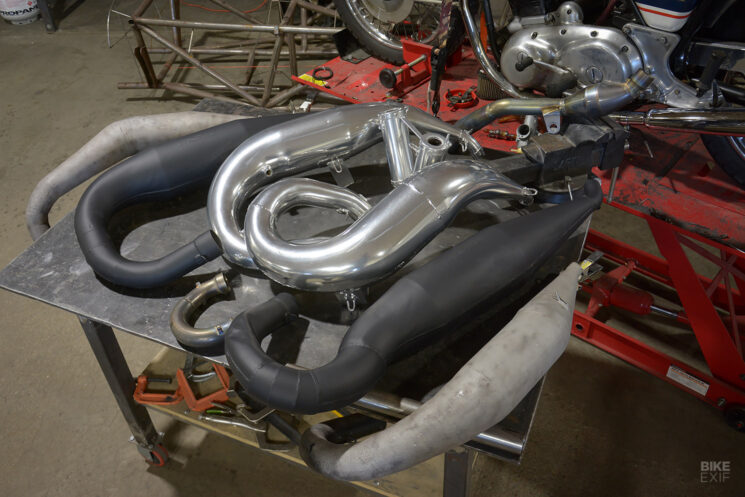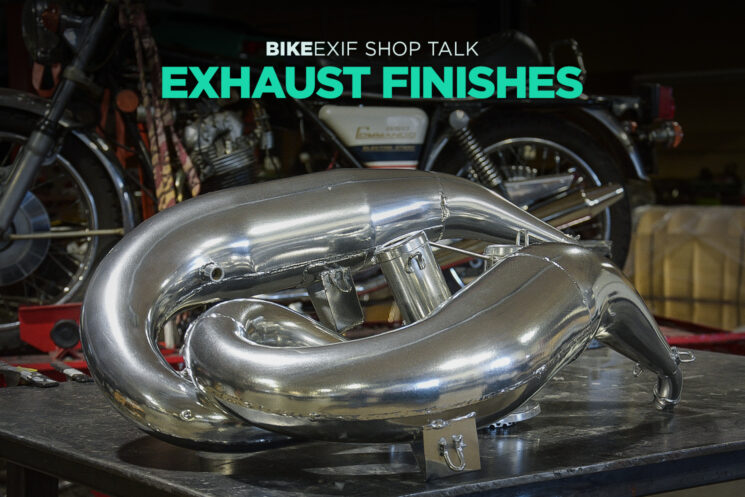
You can spit and polish all you want, but certain finishes on your motorcycle will eventually need to be restored, and exhaust pipes are the most prominent example. In addition to hanging low on the bike and being exposed to all the debris and grime on the pavement, they also have to deal with high temperatures and constant heat cycles. Repeated heating and cooling will tarnish the best finishes on the market, and eventually, you’ll need to know how to restore your motorcycle exhaust pipes.
Pipes are made from stainless, mild steel and even titanium, and stock finishes can be everything from chrome to polish, powder coat and paint. The point is that you’ll need to know a few details about your pipes before proceeding, along with your budget and abilities. While some jobs are best left to the professionals, there are several ways to get quality results at home.
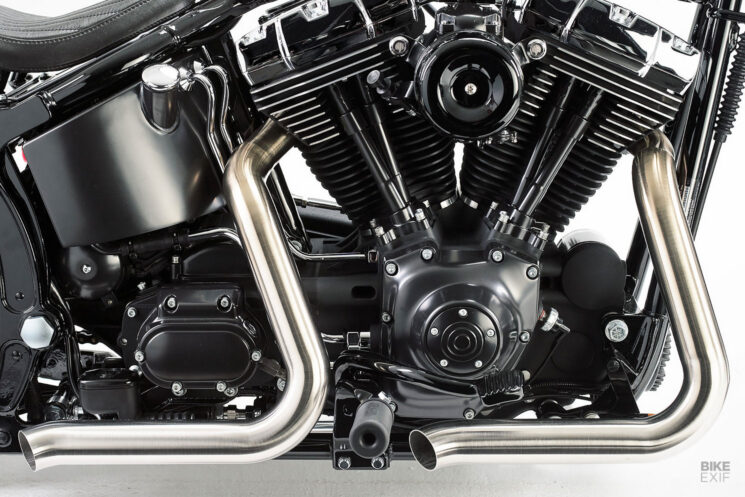
Polishing Stainless Steel Exhaust Pipes Stainless steel has become the new standard, and if a major manufacturer built your motorcycle within the last decade, there’s a good chance it’s equipped with a stainless steel exhaust. Stainless pipes are durable and corrosion-resistant, but they can develop discoloration, tarnish and surface imperfections over time. On the bright side, refinishing stainless steel is easily accomplished at home with little more than good old-fashioned elbow grease.
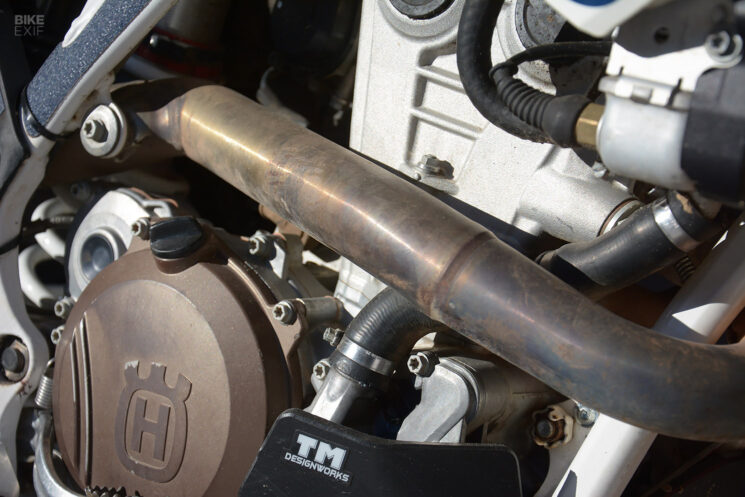
With the pipes removed from the bike, wash them thoroughly with warm water and a mild degreaser to remove road grime, oil and debris. A stiff nylon or brass brush can scrub off stubborn dirt, ensuring you don’t scratch the metal surface.
Next, it’s time to start digging into the baked-in surface grime. Apply a dedicated metal cleaner or stainless steel polish to the pipes. Products like Autosol Metal Polish or Blue-Job Chrome Polish are excellent for this purpose. Use a microfiber cloth or a polishing wheel attachment on a drill to work the polish into the surface, focusing on discolored areas.
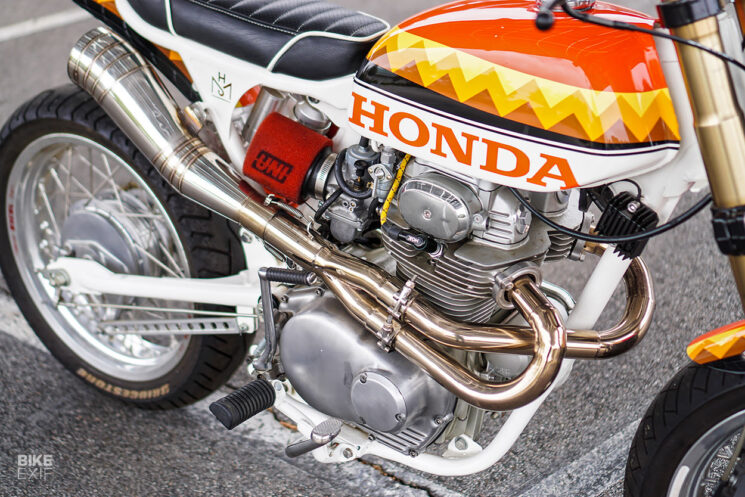
For heavier oxidation and discoloration, you’ll need to go to an abrasive to even out the finish. 0000 steel wool and WD-40 is a proven approach; others prefer fine-grit Scotch Brite. You can also wet sand the affected areas, just be sure to keep the grit fine and the surface well-lubricated. Any time you’re using an abrasive, be mindful of the natural ‘grain’ of the stainless, as you’ll want to work in the direction of the grain for best results.
With the surface contaminants and discoloration removed, it’s time for a final polish to bring out the stainless steel’s natural luster. Apply a final coat of metal polish using a clean cloth or a buffing wheel and buff the pipes to a mirror-like finish, ensuring all residue is removed.
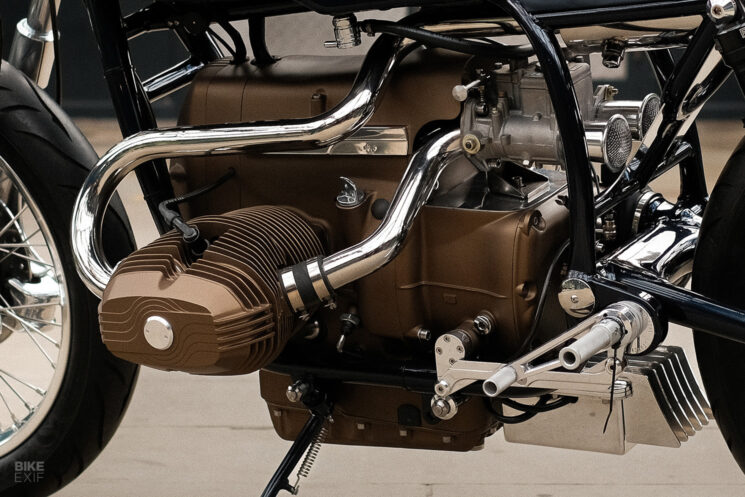
Polishing Chrome Exhaust Pipes Chrome might not get ya home, but there are few stronger finishes known to man. The multi-step plating process produces a durable, mirror-like surface that extends the life of mild steel exhaust by decades. If your chrome is showing some age, but is still somewhat presentable, it’s worth your while to keep up with it.
As chrome ages, you’ll start to notice fine specks of corrosion in the surface. If you don’t handle it at that point, the corrosion will worsen until the chrome fails completely and rusts.
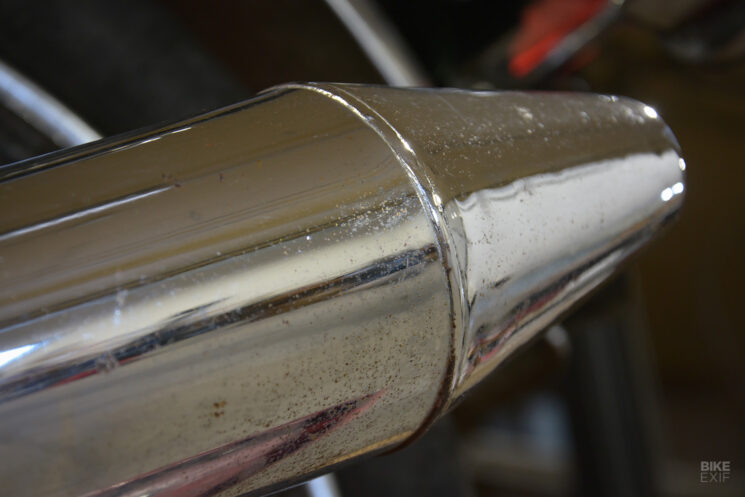
You can improve the look of chrome exhaust pipes while they’re still on the motorcycle, but you’ll get the best results by removing them. Clean the pipes with warm water and a degreaser to remove surface contaminants. Then, use a chrome-specific cleaner or polish, such as Mothers, Blue Magic or Autosol, to restore the shine.
Old-timers swear by 0000 steel wool, but you’ll want to avoid this, as it leaves iron in the pits of your chrome that will rust even quicker. If you have bad pitting, get what you can with the chrome polish, and try your luck with the old aluminum foil trick.
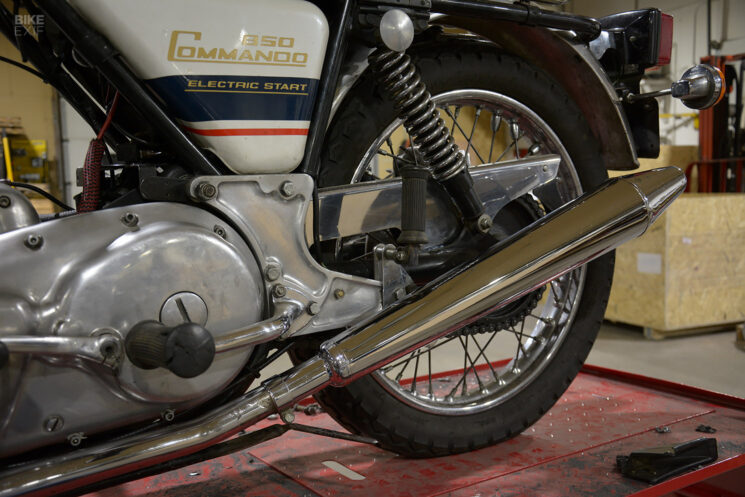
If your chrome has failed completely, it’s probably time to look for a chrome shop or replacement pipes. Stripping chrome is difficult, as the plating holds up to many conventional abrasives and most home-grade sandblasters. We’ve heard that chrome can be removed with a 40% concentration of hydrochloric acid, but can’t speak for the results ourselves. As far as the abrasives go, been there, done that.
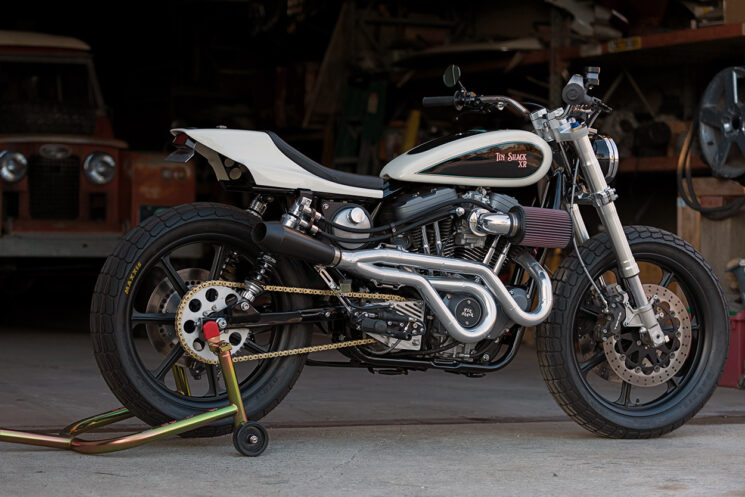
Ceramic Coating Exhaust Pipes If you’re looking for the ultimate solution for a high-performing finish on exhaust pipes, it’s time to pony up for ceramic. We’re not talking about the detailing add-ons car dealerships try to sell you on, but instead, a high-temperature coating that specialist shops apply consisting of silicon carbide, aluminum oxide and other inorganic compounds. It’s available in loads of colors and makes for a durable and uniform finish that’s second to none.
In addition to providing excellent resistance to corrosion, ceramic-coating an exhaust has the added benefit of excellent thermal insulation. The best of these coatings can withstand temperatures over 1,600 degrees F, and best of all, it keeps the heat inside the exhaust. While pipe wrap and other textile products were long a go-to for reducing radiant heat from exhausts, ceramic coating can prevent the pipe from absorbing the heat in the first place and improve exhaust efficiency.
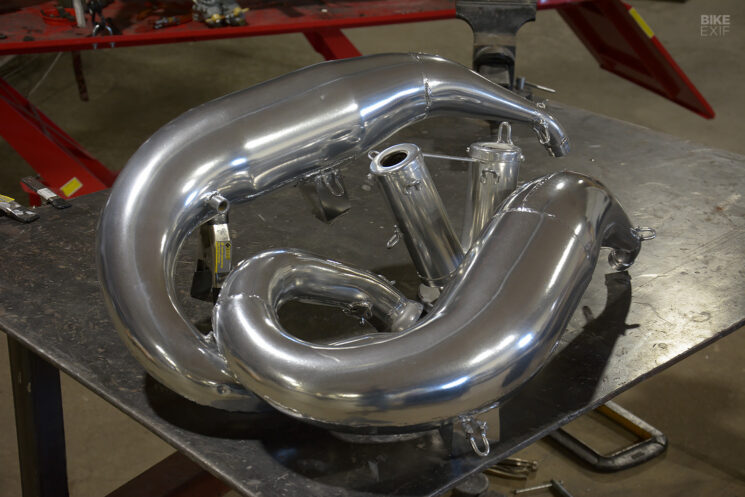
For all the benefits of ceramic, the major downside is that you need to send your pipes out to get the best the coating has to offer. There are ‘at home’ ceramic options, but if you do some digging you’ll find that these products result in a finish that looks a lot like a matte rattle-can job. Real-deal ceramic also requires baking, and you may not be able to get coated exhaust pipes in your home oven (for one reason or another).
The good news is that professional ceramic coatings have gone down in price. Swaintech is probably the best ceramic shop we know of, but we tried a company called Race Coatings for the pipes pictured here. It’s not the best ceramic job I’ve seen, but it was certainly cheap at $335—shipped to Bike EXIF HQ.
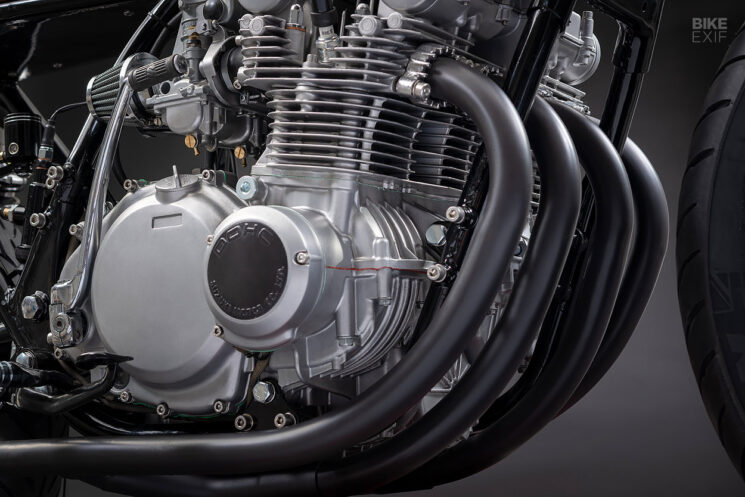
Cerakoting Exhaust Pipes If you’re hip with the latest high-performance coatings available, then you’ve likely heard of Cerakote. They describe it as a ‘ceramic-based finish,’ and it’s all the rage in the gun world and is making inroads in the bicycle, automotive and motorcycle industries. Available in every conceivable shade, with excellent resistance to corrosion, chemicals and heat, Cerakote is an excellent option to consider.
While their catalog is vast, I think the two most important considerations for refinishing exhaust are temperature rating and cure type. Cerakote has a couple dozen shades that will withstand 1,800 degrees F, but just 12 are air-cured, so bake curing isn’t out of the question if you’re set on one color.
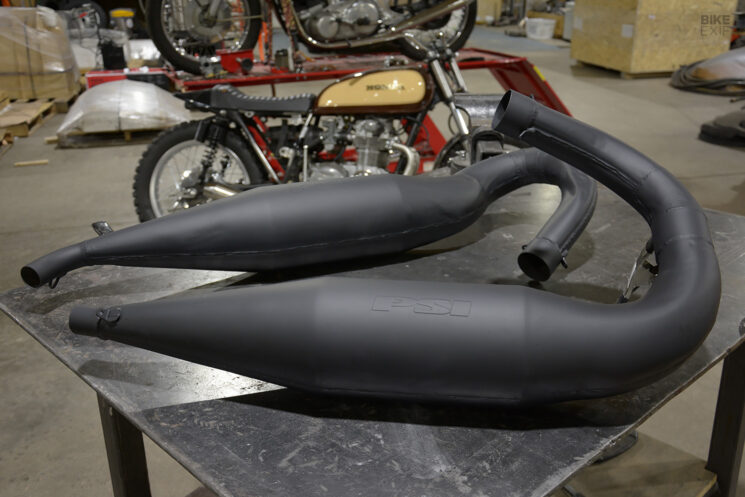
Another important thing to note is that these products require a decent-size air compressor and an HVLP gun with a 0.8 tip to apply. Cerakote has specialized exhaust starter kits that will have you spraying for around $180, but basically, if you know your way around an HVLP gun, you can Cerakote.
After a sandblast and thorough degreasing, we sprayed this set of vintage two-stroke twin pipes with C-7600 Glacier Black for under $80. But word to wise, this finish is very thin and scratches easily, so handle with care.
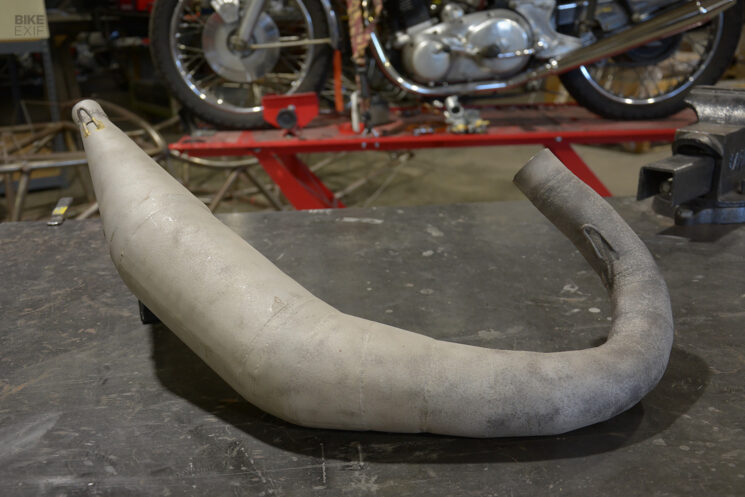
High-Temp Spray Paint for Exhaust Everyone’s first exhaust project starts with good intentions, bad prep and a rattle can, and the results can be underwhelming. Spray paint is the cornerstone of good bikes gone bad, but it’s possible to get a decent finish that will last several years if you’re smart about it.
Many get bogged down with the merits of one spray can versus another when they should be focusing on their prep work. Get your pipes as close to bare metal as you can, and a sand-blasting cabinet will greatly reduce the amount of elbow grease you’ll need to invest in the process. If you can’t access one, a wire wheel is likely your next best option.
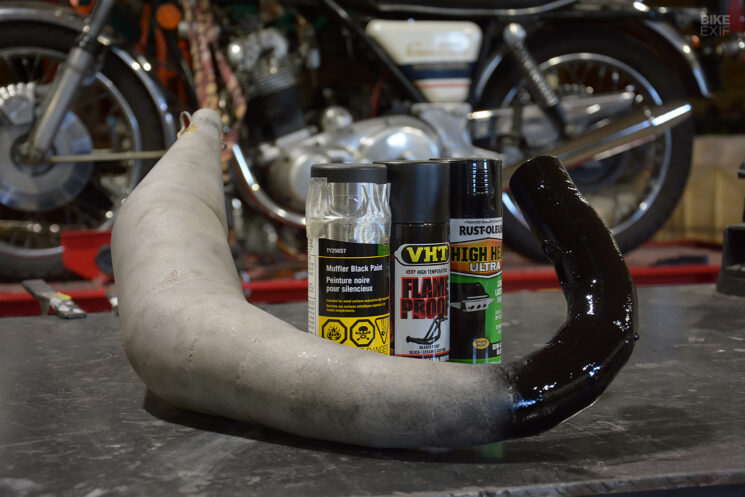
When you’re down to good steel and spiffed up with acetone, then you can start stressing which spray bomb is best. Don’t even think about using something like engine enamel, as finishes like these are only good to about 500 degrees F. Paint approved to temperatures north of 1,500 degrees F will give you your best chance at success. I’ve had good luck with VHT Flameproof and John Deere muffler paint, but I’ve heard guys swear up and down that Krylon grill paint is as good as any of them.
